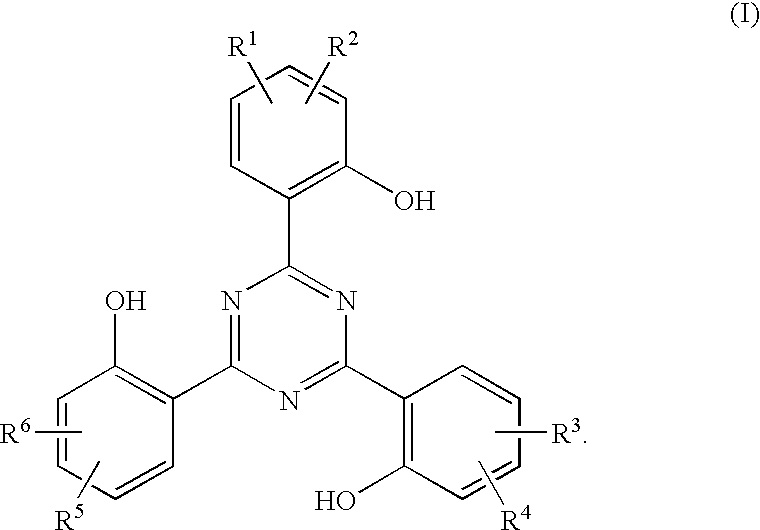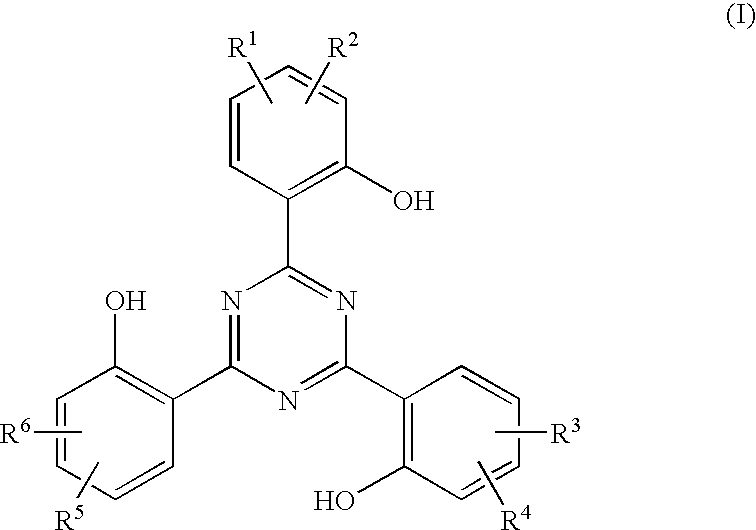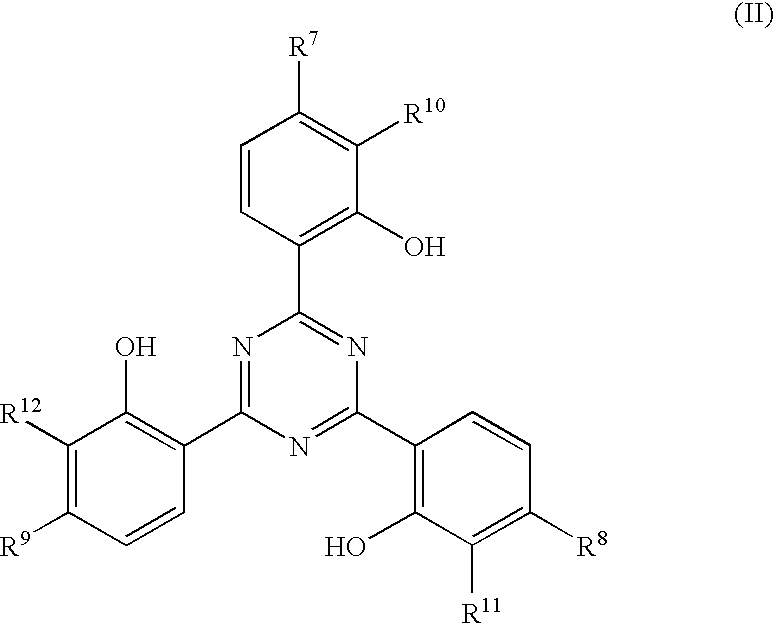Optical Film
a technology of optical film and film spherical, applied in the field of optical film, can solve the problems of film falling, bleed-out or color tone change cannot be avoided, serious consequences, etc., and achieve the effect of superior absorbing power and little bleed-out of this ultraviolet absorber
- Summary
- Abstract
- Description
- Claims
- Application Information
AI Technical Summary
Benefits of technology
Problems solved by technology
Method used
Image
Examples
example 1
[0048] A resin solution comprising 65 mass parts of a mixed solvent of cyclohexane / toluene (1 / 9 mass ratio), 35 mass parts of norbornene resin (commercial name ZEONOR 1060R, Nippon Zeon Co., Ltd.) and 2.0 mass parts of the ultraviolet absorber disclosed in TABLE 3, was spread on a surface-polished glass plate with a bar coater, pre-dried at 50° C. for 20 minutes, and dried at 90° C. for 30 minutes to obtain a 25 μm film. For the obtained film, the transmittance at a light wavelength of 380 nm was measured using a U-3010 spectrophotometer, manufactured by Hitachi, Ltd. The results are shown in TABLE 3.
TABLE 3380 nmUltraviolettransmittanceNo.absorber(%)Example 1-1Compound9.07No. 4Example 1-2Compound16.0No. 12Example 1-3Compound12.7No. 15Example 1-4Compound7.22No. 18Comparative—89.9example 1-1ComparativeComparison20.2example 1-2compoundNo. 2ComparativeComparison21.6example 1-3compoundNo. 3
example 2
(Combination 2)
[0049] 100 g of Iupilone S-3000 (polycarbonate resin manufactured by Mitsubishi Gas Chemical Co., Inc.) was blended with 3 g of Compound No. 28.
[0050] The aforesaid Combination 2 was melt kneaded at 280° C. for 5 minutes with a plast-mill. After kneading, it was extruded from a nozzle of diameter 6 mm, and pellets were obtained using a water-cooled pelletizer. Using an electric heating press these pellets were molded at 280° C. to obtain a film of 0.25 mm thickness. For the obtained film, the transmittance at a light wavelength of 380 nm was measured in an identical way to that of Example 1. The result was 1.4%.
example 3
(Combination 3)
[0051] 100 g of Adeka Arkls R-103 (acrylate resin manufactured by Asahi Denka Kogyo K.K., resin component 50 wt %), was blended with 1.5 g of Compound No. 31.
[0052] A resin composite was manufactured with the aforesaid Combination 3, this was applied to a polyethylene terephthalate (PET) film of thickness 188 microns by a bar coater #9, and dried at 80° C. for 30 seconds to obtain a bilayer film. Next, this bilayer film was bonded to an alkali glass plate of thickness 0.9 mm by thermo-compression at 100° C., and a PET film cover glass sheet having an optical film containing the ultraviolet absorber between a glass plate and a PET film, was manufactured. For the obtained PET film cover glass sheet, the transmittance at a light wavelength of 380 nm was measured in an identical way to that of Example 1. The result was 1.0%.
[0053] From the aforesaid Examples 1-3, it was confirmed that the optical film of the present invention had superior absorbance at a light wavelen...
PUM
| Property | Measurement | Unit |
|---|---|---|
| transmittance | aaaaa | aaaaa |
| wavelength | aaaaa | aaaaa |
| transmittance | aaaaa | aaaaa |
Abstract
Description
Claims
Application Information
 Login to View More
Login to View More - R&D
- Intellectual Property
- Life Sciences
- Materials
- Tech Scout
- Unparalleled Data Quality
- Higher Quality Content
- 60% Fewer Hallucinations
Browse by: Latest US Patents, China's latest patents, Technical Efficacy Thesaurus, Application Domain, Technology Topic, Popular Technical Reports.
© 2025 PatSnap. All rights reserved.Legal|Privacy policy|Modern Slavery Act Transparency Statement|Sitemap|About US| Contact US: help@patsnap.com



